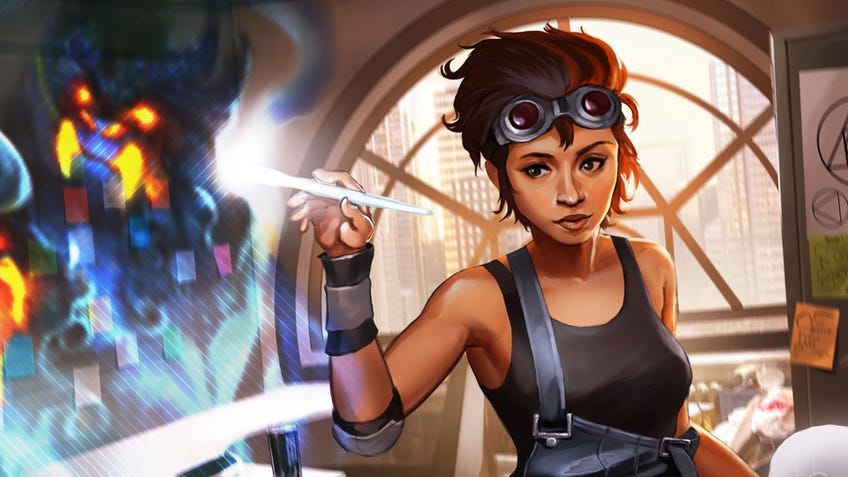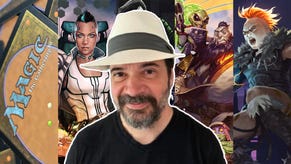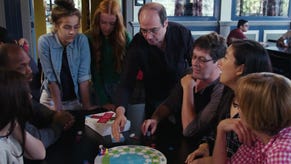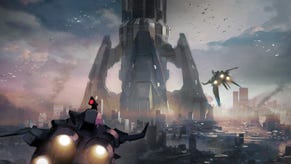The afterlife of Android: Netrunner - the community taking a beloved card game's future into their own hands
“It felt like losing a friend.”
Last May, there was a thread on Twitter where gamers discussed the tabletop titles they'd spent the most hours playing. As you might expect, there was a colossal diversity of opinion. But that made the single strong trend that emerged all the more striking; over and over, the game Android: Netrunner came up. Fans of the game poured forth their love and the hours they'd sunk into play. Not bad for an out-of-print game cut short in its prime.
Android: Netrunner's cancellation in autumn 2018 was its second demise. Designed by maestro Richard Garfield, the mind behind Magic: The Gathering, and set in the expanded universe of Mike Pondsmith's prescient sci-fi RPG Cyberpunk 2020, the original Netrunner came out in 1996. But the card game of cyber espionage never took off like its fantasy sibling and got nixed four years later. After lying dormant for 12 years, Fantasy Flight Games picked up the licence.
The publisher changed Netrunner’s format from a collectible card game to a "living" one, where it released fixed expansions - rather than randomised booster packs - on a regular schedule. Fantasy Flight also changed its setting from the Cyberpunk universe to its own sci-fi world of Android, granting the game a new prefix upon its rebirth in 2012. It proved popular but suffered cancellation for a second time six years later, mere months after the release of a new revised core set, this time due to an apparent licensing dispute with original publisher Wizards of the Coast.
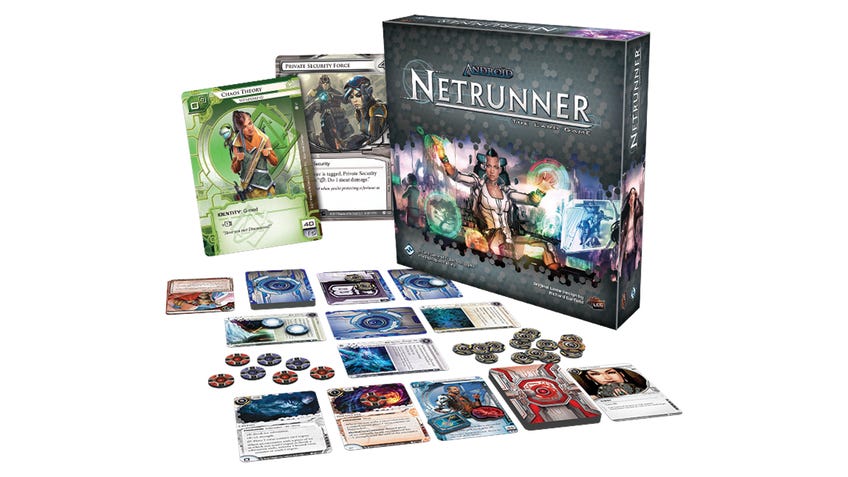
During its run, Android: Netrunner's influence spread way beyond the gaming community. It's not just the odd tweetstorm; Netrunner fans turn up in all sorts of high and unlikely places. It spawned slavish articles in the mainstream video game press and got coverage in national newspapers and magazines. Some of the game’s cards and sets that saw limited print runs now command sums many times their original selling price. Inside and out of the board gaming community, it's regarded by many to be one of - if not the - best trading, collectible and expandable card games ever released. Perhaps most impressive of all, though, is Project NISEI.
"After the game cancellation was announced, I was pretty devastated," Serenity Westfield, the community manager at Project NISEI, tells me. "It had given me something positive to focus on during my divorce, so it felt like losing a friend. When some of the key community members said they were working on something called Project NISEI I decided I wanted to be involved as much as possible."
Android: Netrunner's asymmetry is something I've not seen anywhere else.
NISEI stands for Nextrunner International Support and Expansion Initiative. As Westfield explains, that's a handy backronym: "NISEI is both something from the game and also the Japanese word for 'second generation'." Staffed by volunteers, its mission is to keep Netrunner alive; not merely on life support, but as a vibrant, growing concern by supplying new material for the game and organising tournaments.
With a current staff of 52 and ongoing recruitment, a website, live tournaments and several new card sets under its name, it's clear the project is serious about its purpose. But what is it about Netrunner that inspires such devotion?
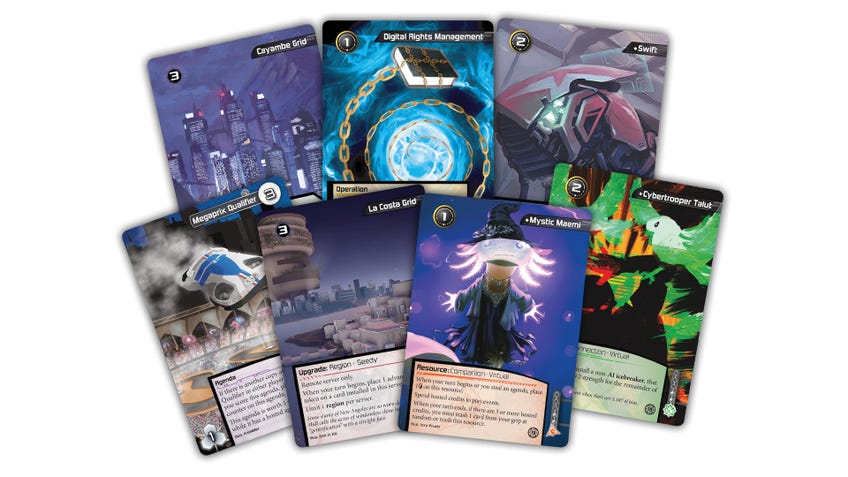
The game is a two-player affair in which one, the Runner, tries to uncover secret agenda cards hidden by the other, the Corporation. Gameplay for each role is almost entirely different, leading to a huge asymmetry often quoted as key to the game's appeal.
Personally, what fascinates me about Netrunner is how it conjures the sense of computer hacking from a few piles of cards. Everything on the Corporation player's side of the table - their hand, deck, discard pile and played cards - are treated as a computer server the Runner player can hack. If the latter has the necessary cards to bypass the Corporation’s protective software, called ICE, they can raid a pile, look at a card, then maybe choose to steal or discard it. A whole world of corporate espionage built from a few flimsy cards.
"It's a unique game," Westfield enthuses. "The asymmetry is something I've not seen anywhere else." She's also keen on Fantasy Flight's approach: "As it's a living card game, rather than a collectible one, there's no buying your way to victory. It's a level playing field, especially now proxies [cards printed by players at home] are legal at events."
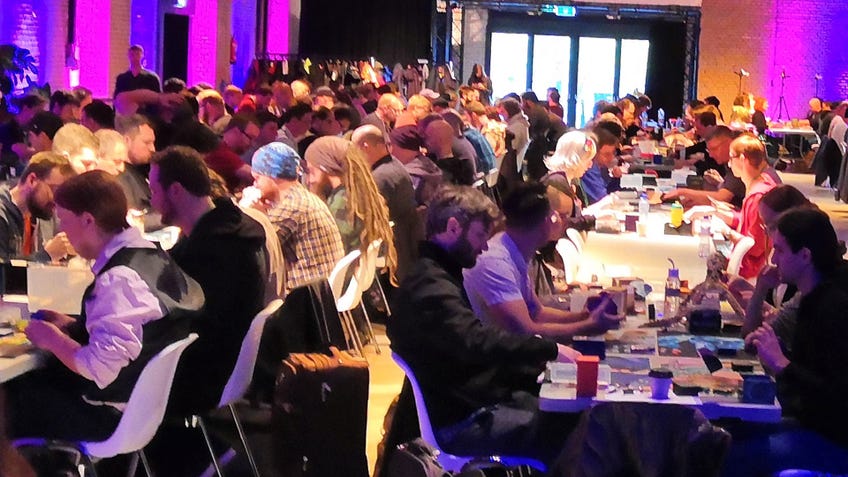
Plenty of other out-of-print games enjoy a following of loyal fans, yet don't evoke the adoration that set Project NISEI in motion. Netrunner, however, has something extra to bind its community together.
As a cyberpunk game, it's free of the tiresome tropes that often dog fantasy and sci-fi, and uses that freedom to the fullest. Characters and card art show a cast that runs all colours and genders, including the LGBTQ+ community. The player base that sprang up around the game echoed that representation and is protective of the space it gave them. That includes Westfield, who is trans. "I've never been part of a community that's quite so accepting of people," she explains. "It doesn't matter what colour your skin is, your sexuality, if you're trans or non-binary; if you play the game and respect other people, you're welcome."
I've never been part of a community that's quite so accepting of people.
What's even more impressive about NISEI is that it stays afloat without any professional input. Westfield tells me it has no communication either with Fantasy Flight or Richard Garfield. "We hope they like what we're doing, though," she says. Surprisingly, there are no legal issues involved. "The patent on the rules expired in 2016," she continues. "'Netrunner' is no longer trademarked, although we don't actually use that term ourselves anyway except to say our products are compatible with it." Dicebreaker approached Fantasy Flight for comment but received no response by the time of publication.
All the design work, from visual to mechanical, is done via the project. "Every bit of the cards we make, even down to the glyphs, was made from scratch by our internal graphic design team," Westfield explains. "All of our art is commissioned specifically for the cards, too; we don't use anything that is owned by a third party." Project members write fiction to support their releases, Westfield included. "It inspires the creative juices because cyberpunk is such a great genre," she enthuses. "You've got the clash between corporate giants and individual freedom, not to mention the whole aspect of what it means to be human in a world with androids, clones and g-mods [genetic modifications]."
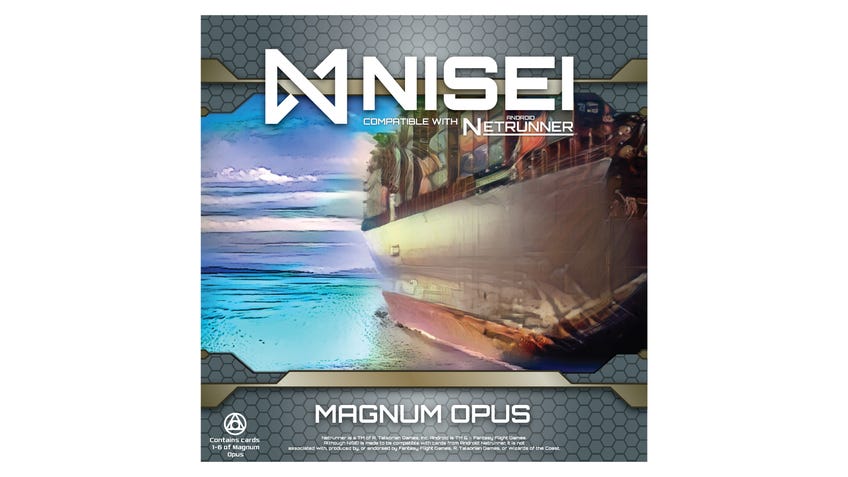
Westfield doesn’t design new content herself, but she talked me through the process. The design team sets itself some goals for the set in terms of content rotation and balance. They then work with a creative team to give it some backstory. Their completed cards get handed over to the development team, who playtest it and send any concerns back to design in an iterative cycle. Once complete, a rules team tweak it for clarity, and creative decides if it'll bear internal art or an external commission.
Lots of work also goes into updating the list of cards that are banned or restricted in standard play. NISEI has a community-built tool, cobr.ai, which is used for organising tournaments and allows the group to track decks that appear to be dominating. Westfield offers the card Crowdfunding as an example; “It was a very strong criminal card that was appearing in a lot of decks, across all factions,” she explains. “It invalidated a lot of Corp play styles, so it got made restricted. Even that didn't stop it appearing in a significant portion of decks - so it eventually ended up being banned.”
It sounds like a lot of work to do for love, but the project isn't short of volunteers to do the hard graft. "There wasn't a single role in the second wave of recruitment we didn't have multiple applicants for," Westfield says. "There's a lot of very talented people who play the game, so it's only very specific skills we find it hard to recruit for. People generally view it as positive when we recruit because it's further evidence that we're not about to shut up shop."

Community feedback is enthusiastic. The project makes it easy for players to get hold of the team, maintaining an active presence on relevant channels in Slack, Facebook and Twitter. "We all came from the community," Westfield points out. "We know that they have the same goal as us, to keep the game alive, so it's good to hear what people want from us." They’re also on the Reddit forum r/netrunner, where it’s easy to canvas opinion, most of which is positive. There was particular praise for their decision to permit the use of proxies in tournaments. “I’m super impressed,” longtime player Iain Chantler tells me. “They're more like a small professional company than a volunteer community fan project.”
A few voices, though, are more circumspect. “NISEI is the new face of the game, but I think their comms strategy still reflects their community origin,” says another player, Spencer Wharton. “Until [expansion set] Downfall was released this spring, NISEI's article titles were a mess. If you're new to the game and trying to learn about it? Those titles look sloppy.” Wharton’s at pains to point out that in all other respects he’s delighted with the work the project does. And he’s confident about the future: “NISEI is recruiting, and I'm optimistic they'll find someone with the understanding and vision needed to turn this pattern around.”

Lack of professionalism is also the charge laid by Sean Duncan, an academic at the University of Virginia and a former member of NISEI. “I never had a sense of what my job was,” he tells me. “My experience was one of being excited to do something and then having my ‘boss’ do everything for me before I could do it.” That boss was, in fact, Westfield. “There was a sense that this was less a working project,” he continues, “than a collection of friends who were thrilled that they could continue the game. If you aren’t a part of that in-group, it is very difficult to find a way to participate meaningfully.”
Duncan was eventually asked to leave the project after having a bad experience playing in a NISEI event and saying so in public. However, he too has optimism going forward. “I have found my way back recently, and am playing again,” he says. “I believe they’re all very well-intentioned and are learning as they are going. But, in the end, Netrunner still feels like it’s a product that’s being delivered by NISEI, rather than as a community that’s been fostered, grown and developed. And I wish it was the latter.”
Even releasing new cards as quickly as we can, a few people complain we're not going fast enough.
Predictably, there are also grumbles about the way particular cards and decisions have affected game balance. Indeed, casual players might question why a game with a wealth of existing expansion material even needs more content. Westfield has an answer. “Eventually even they would get bored and move on to something else,” she opines. “For people who play competitively, though, it just makes events very same-old, same-old. Even updating our ban-restrict list three or four times a year and releasing new cards as quickly as we can, a few people complain we're not going fast enough."
She’s adamant that new content is essential to NISEI’s mission of keeping the game fresh. “We've seen what happens when the meta gets stale; players drift away,” she explains. “It removes the deck-building challenge which grips so many people. There was a big gap in releases under FFG's reign, and event turnout dropped heavily. To give you an example, 2016 UK Nationals numbered about 200 players. In 2017, which was during the content drought, it was 85.”
It’s clear that Westfield feels tournament play is a critical part of what NISEI does, despite the financial burden involved. “Most events are ticketed, so the cost of the venue and the kit is covered that way,” she says. “We only run three events ourselves a year: the World Championships, plus the European and North American Continental Championships. Everything else is run by local organisers. Regionals and nationals are done via application. If you want to host one, we make sure there isn't a clash, and then you buy the kit.”
Again, there’s that community stepping up to support NISEI, helping to keep the game they love alive. A community so tight that they were among the first people Westfield told when she came out as trans. “I knew they'd not treat me any differently,” she says. And organised play is their cornerstone. “That's when the players get together in person,” she continues. “That's what makes the community thrive. They're the glue that binds us together. Championship season is my favourite time of the year because I know that for three months I'll get to spend most weekends hanging out with people I like, playing my favourite game. I know I'm far from alone.”
